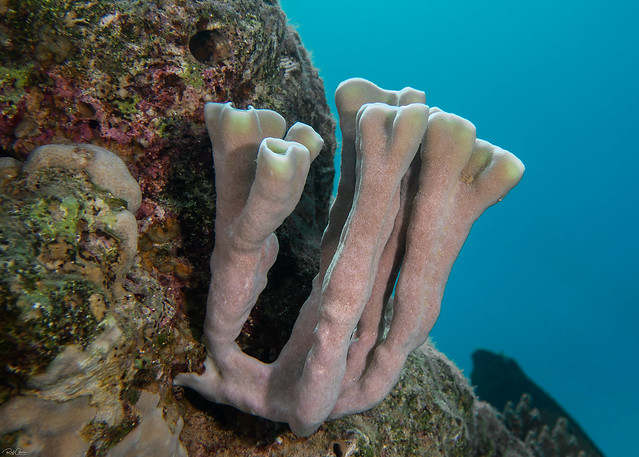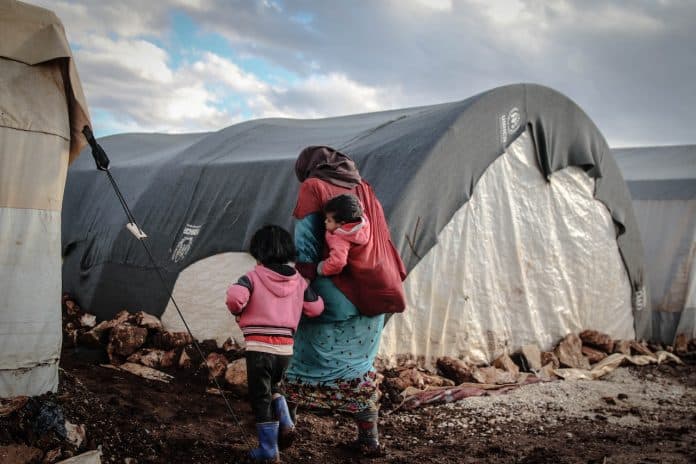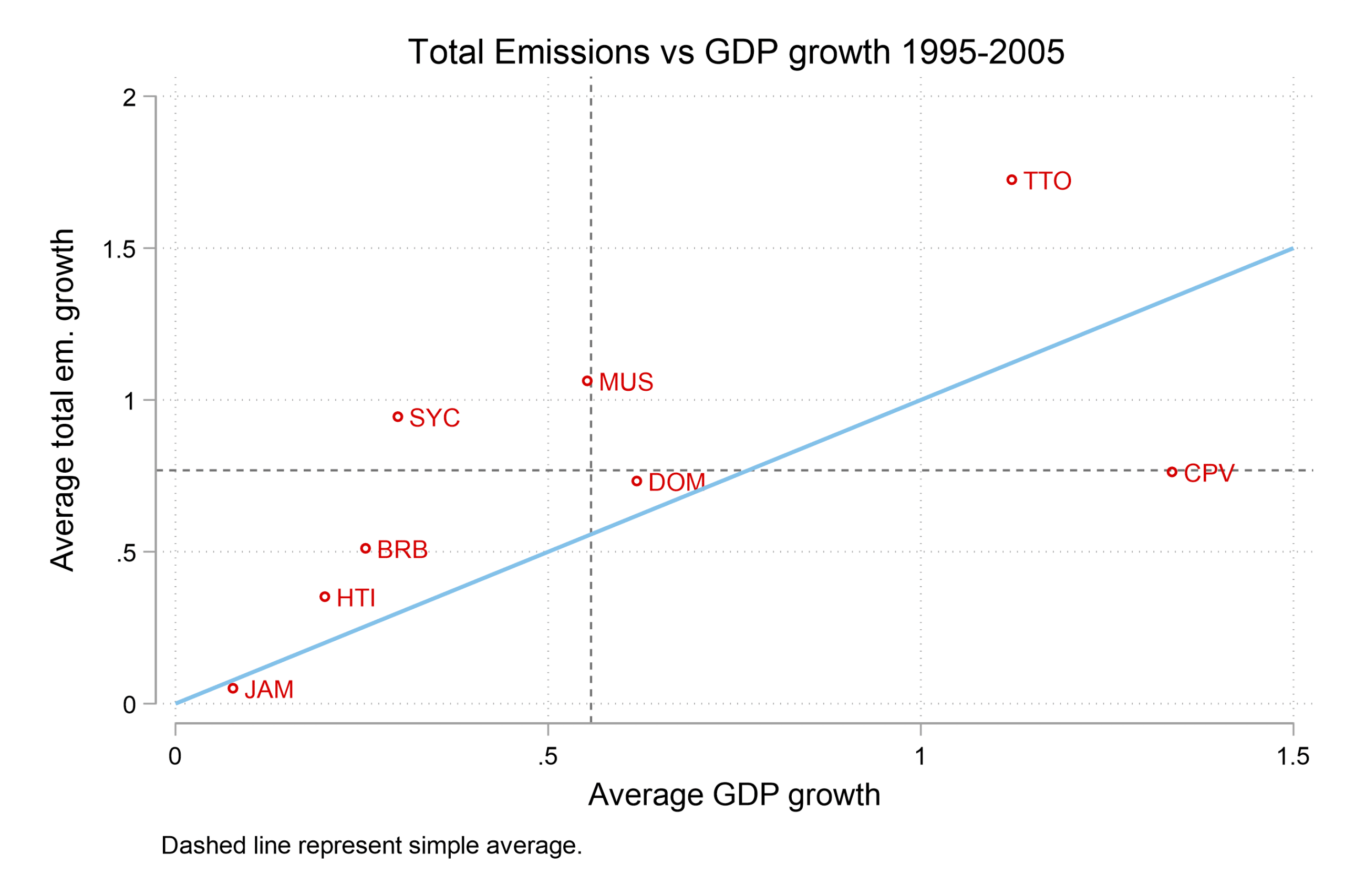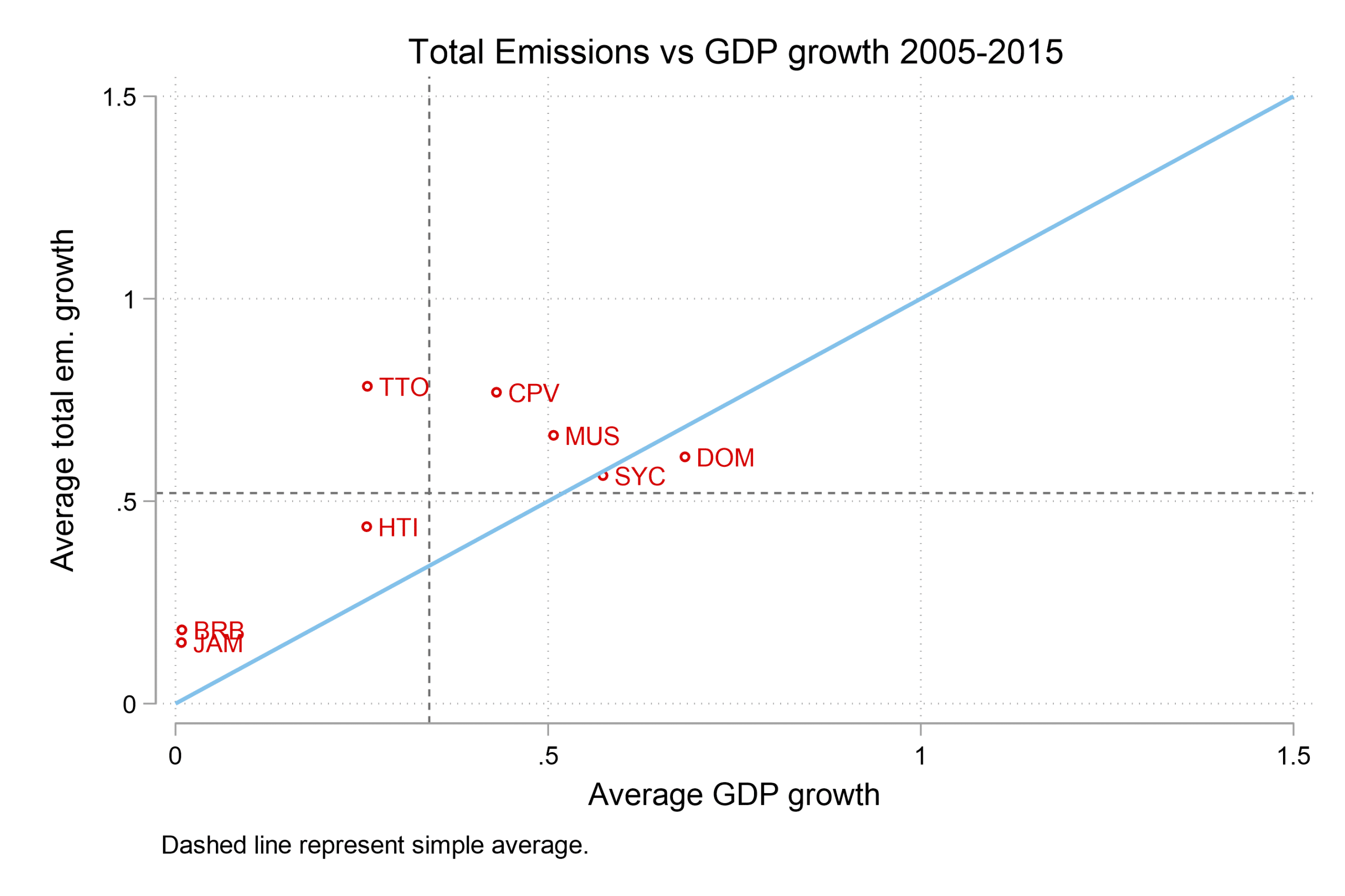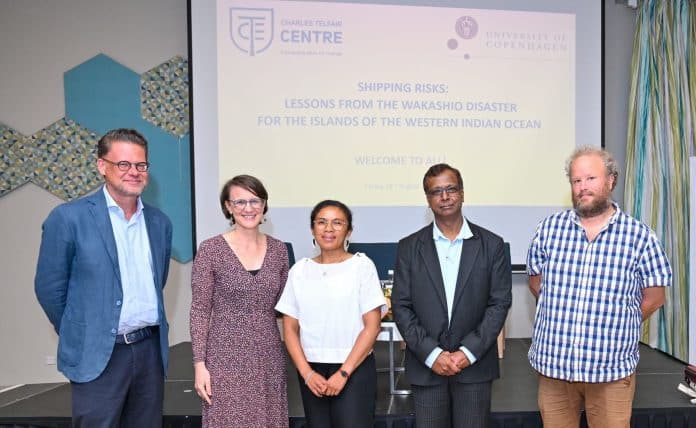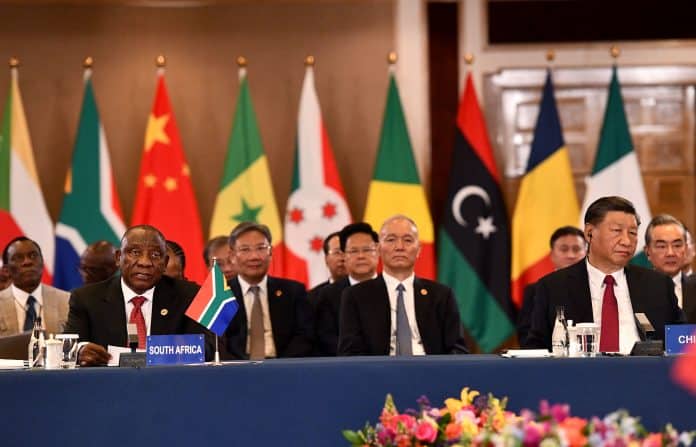Jeevesh Augnoo, Head of the Law Department and Senior Lecturer at Rushmore Business School, Mauritius
Krishnee A Appadoo, Senior Lecturer, Faculty of Law and Management, University of Mauritius & PhD candidate at the University of Western Australia
Bhoomika Jaggeshar, PhD candidate at the University of Strathclyde, Glasgow
Climate change poses significant long-term challenges to planetary and human wellbeing. It is unfortunate that anthropogenic actions over the decades have exacerbated the situation for vulnerable people and systems, who are facing the severe and irreversible impacts of climate change. The island of Mauritius, which also forms part of the Small Island Developing States (SIDS) community, is no different regarding this issue. With varying temperatures and rainfall patterns, frequent and highly intensified cyclones affecting it, the country has established various strategies and mechanisms to help curb the impacts of climate change in order to alleviate the problems being faced by its population. However, very little has been done in order to include climate change education into the educational curriculum whether at nursery, kindergarten, primary, secondary or university levels. This research paper intends to showcase how we can promote climate change education in schools in order to better equip the community (especially our youth) with the relevant knowledge to better understand and address the climate change crisis within the Mauritian context.
Introduction
Climate Change has been the subject of debates and discussions, with a breakthrough reached for vulnerable states at COP27 in terms of the fund for “loss and damage.” The effects of climate change have been researched, documented and disseminated widely. This research made its way into the corporate culture, gaining some impetus following the open letter of 2015 “urging for concrete climate action” (Allen & Craig, 2016), and becoming a prominent and crucial element considered by companies worldwide in terms of good governance and operation as well as the higher education level, with a range of broad and focused educational qualifications available at various levels. It is therefore essential to promote adequate climate change education in schools, especially in SIDS, such as Mauritius to move from goals to processes. Described as education which “helps people understand and address the impacts of the climate crisis, empowering them with the knowledge, skills, values and attitudes needed to act as agents of change,” it is an essential tool for social transformation and sustainable development (UNESCO, 2023).
Climate Change Education and its Importance
Climate change is not just a scientific phenomenon but a socio-scientific problem requiring more than content teaching. Learning to adapt to risk, uncertainty, and rapid change is the focus of climate change education (IPCC, 2014). Organisations like governments and nongovernmental bodies have traditionally conducted climate change education. However, they might experience issues in transmitting the necessary messages in order to engage with the appropriate audience (Lee et al., 2013). According to Mochizuki and Bryan (2015), one of the most important and effective ways to build capacities for addressing the climate crisis is to integrate climate change education into formal education systems. This is because of the multiplier effects, in which individuals share what they have learned, particularly in relation to adaptation and mitigation, for the benefit of families and communities. As a result, climate change education must emphasise the kinds of learning, critical and creative thinking, and capacity building that will enable young people to engage with the information, comprehend, and take the actions crucial to address climate change.
Climate change schooling cannot be restricted to conventional designs and formal educational plans but rather needs to draw on new informal and hybrid spaces offering better opportunities for learning and activity (Stevenson et al., 2017). As with any form of education, climate change education in schools has the potential to “influence families and communities as well through the multiplier effect” discussed above. Climate change education is vital in terms of mitigation and adaptation. Climate change education should be comprehensive and multidisciplinary. That is, it should be interlinked with concepts such as sustainable development, disaster risk reduction, sustainable consumption and production, as well as the circular economy.
The evolution of climate change has accentuated the need for reviewed climate change education, and its widespread effects even more so. Consequently, what is taught and learnt about climate change has also evolved, with increasing focus on learning about the risk, uncertainty and rapid change. Cordero, Centeno & Todd (2020) discussed the relevance of climate change education for engagement at an individual level. Eilam (2021) identified the lack of widespread climate change education, stressing how it can no longer be ignored in curricula at school level. Global actors in school curricula including Cambridge Education have further explained how climate change education is important, offering free access to books as well as working together with partners to ensure adequate dissemination, as propounded by UNESCO.
Climate Change Education in Mauritius
In Mauritius, there are very limited measures being undertaken to implement climate change education. For example, in 2015, a new education kit was unveiled in Mauritius to assist students in learning about climate change adaptation and mitigation measures. The Climate Change Education Kit was launched by the Mauritius Institute of Education (MIE). The latter announced that it would be targeting 258,000 primary and secondary school students, aged six to eighteen years old. According to the MIE, “the kit aims at informing and challenging the students to develop appropriate skills and qualities for adaptation and survival in fast-changing ecological and environmental trends.” The kit’s role is to inform and challenge students to develop appropriate knowledge and skills for adaptation and mitigation in a society with fast changing environmental and ecological tendencies. Keshwar Beeharry-Panray, representative of the NGO ‘Environment Protection and Conservation Organisation (EPCO)’ praised this initiative, highlighting that “this climate change kit is a preparedness programme to help the kids get ready to face the issues of climate change.” Dr Ravhee Bholah, Project Coordinator of the Climate Change Education Kit at the Mauritius Insititute of Education (MIE), explained that the production of the kit was funded by the government of Japan, as part of the Africa Adaptation Programme, to the tune of US$ 3 million.
In terms of content, the kit contains a wide range of curriculum resource materials, including factsheets, bookmarks, flyers, comic strips, 3D models and teachers’ manuals. This kit was distributed to 320 primary and 176 secondary schools across the island. In terms of content, the kit aims at offering insights to students on learning to adapt to climate change associated risks, uncertainty and rapid change, as well as equip them with understanding regarding adaptation and mitigation strategies especially as Mauritius is a small island. In secondary schools, as per the National Curriculum Framework (NCF), there has been a first step in terms of climate change education, as the latter is distributed across some modules such as Design and Technology, Home Economics, etc. It is encouraging to note that one of the core values of the NCF is sustainability, which means that the curriculum, by extrapolation, embraces the United Nations Sustainable Development Goals (SDGs), and hopefully SDG 13 which is climate action.
At the tertiary (higher education/university) level, there are undergraduate and postgraduate programmes which focus on climate change education. For example, at the University of Mauritius, there is the MSc Sustainable Energy Engineering with Environmental Management, which has a dedicated climate change module. Furthermore, the Faculty of Agriculture, of the same institution, also offers an MSc in Climate Change and Sustainable Development. At the same time, the University of Technology, Mauritius, offers an MSc in Climate Change, Health and Disaster Management. The Université des Mascareignes gives the possibility to students to enrol on its MSc in Sustainable Business Management, which has a few climate change focused modules.
On top of this, the government of Mauritius, in its bid to empower students to embark upon climate change focused degree, through its Ministry of Education, Tertiary Education, Science and Technology, is offering Masters scholarships to eligible students who are either Mauritians or citizens of member states of either the African Union of African Commonwealth countries, and these scholarships are tenable for the MScs offered as mentioned above at the University of Technology, Mauritius and the Université des Mascareignes.
While the above examples demonstrate the commendable measures which have been taken in Mauritius to integrate climate change education into the nursery, kindergarten, primary, secondary and university curricula, it is argued that these remain inadequate. Despite the fact that Mauritius has updated its Nationally Determined Contributions (NDCs) to mention that “an awareness raising strategy and communication plan ha[d] been prepared to sensitise various stakeholders (women association, youth leaders, senior citizens, fishers, planters, academia, professionals, students, private sector, civil society and NGOs)” on climate change adaptation and mitigation, it is rather unfortunate that this is not the case as can be demonstrated by the lack of climate change education and awareness in Mauritius, by government-run educational institutions. What is clearly lacking is a holistic approach to climate change education and awareness which should be mainstreamed across relevant subjects and modules at primary, secondary and tertiary education levels in Mauritius.
Moreover, climate change education should not be included in the curriculum with the mere attempt to tick boxes. Instead, more effort should be put into training educational professionals across all three levels to integrate climate change education so that students are not only taught but also assessed through engaging, fun and mature modes. Additionally, students should be immersed into the realities of climate adaptation, mitigation and loss and damage, by bringing them closer to the communities which are being affected by the climate crisis such as fisherfolk, farmers, and other groups that rely on the climate for their livelihoods.
Climate Change Education around the world
While the UN has been calling for climate change education to become mandatory in schools as from the ages 2-5 so as to better equip children to adapt and mitigate global warming in the future, only a handful of countries currently mandate climate change studies in their education system, despite most of them being signatories to this objective in the Paris Agreement. As such, article 7 (5) of the Paris Agreement calls for “Parties acknowledg[ing] that adaptation action should follow a country-driven, gender-responsive, participatory and fully transparent approach, taking into consideration vulnerable groups, communities and ecosystems, and should be based on and guided by the best available science and, as appropriate, traditional knowledge, knowledge of indigenous peoples and local knowledge systems, with a view to integrating adaptation into relevant socioeconomic and environmental policies and actions, where appropriate.” It is believed that integrating climate change-related subjects in school curricula will assist the youth in coping better, both psychologically and practically with the reality of climate change.
Cambodia has integrated climate change education into its curriculum with a new and enhanced Earth Science curriculum, since the year 2020. High school students are being taught about the factors that contribute to climate change and also about the vulnerability of their country to the effects of climate change. While learning the basics of adaptation and mitigation, the youth are also assigned to work on projects such as climate-smart agriculture and tree-planting. Argentina’s Parliament recently approved a National Law of Comprehensive Environmental Education, also known as the Pino Solanas Law, in 2021, where environmental education is now being taught in all schools at all levels.
The vulnerability of India vis-a-vis climate change is evidenced by the catastrophic climatic events it faces namely, flash floods, landslides, and intense cyclones. Therefore, the country has already advanced towards introducing climate change education in schools as an adaptation strategy. India has established child cabinets, adolescents and youth platforms like Meena and Raju at school so that girls and boys can forthrightly discuss topics related to climate change and disaster risk reduction. In addition, UNICEF assisted in adapting the Safe Saturday concept, a component of school safety aiming at developing children’s knowledge and skills in order to be better prepared in dealing with disasters and climate change.
With the intention of strengthening the capacities of 100 master trainers and 10,000 schoolteachers through related training, successful advocacy in the State of Maharashtra resulted in the integration of climate action and environment lesson plans into the first and second-grade curricula of 65,000 primary schools across the state (UNICEF, 2023). However, according to Sarang (2021), the rewritten curriculum in India makes the first tentative connections between disciplines thereby emphasising the complexity of coincidental issues and procedures. However, putting these curriculum changes into action is difficult. Even though subjects are redesigned around environmental issues, they do not address immediate concerns like sustainability and climate change.
Recommendations and Conclusions
As has been discussed above, climate change education is vital not only for the youth but for all sections of the population, be it young or old. However, climate change education and awareness-raising is even more important for the youth as they are the stewards of tomorrow and will inherit the Earth as it is progressing now. In line with the principle of inter and intragenerational equity, we owe it to this and the next generation, to leave the planet as pristine and climate safe as possible.
In Mauritius, as has been demonstrated above, there is a dearth of projects and initiatives which focus on climate change education. For this reason, it is proposed that Mauritius turns to countries like India, Argentina and Cambodia to mainstream climate change education into the educational curricula. Moreover, more funding should be diverted towards climate change education, whether at the nursery, primary, secondary or university levels. Additionally, there should be enhanced training of staff, such as educators and academia in order for them to be able to teach climate change education. Measuring the impact of any curriculum change or initiative in education is quintessential, and thus requires signalling. Finally, climate change education should not only be relegated to the youth, but there should be community projects and programmes aimed at raising awareness for climate change for people of all ages, ethnic groups, genders and more importantly minority groups such as women, the disabled and indigenous groups.
Main photo by Gustavo Fring on Pexels.
Charles Telfair Centre is an independent nonpartisan not for profit organisation and does not take specific positions. All views, positions, and conclusions expressed in our publications are solely those of the author(s).



